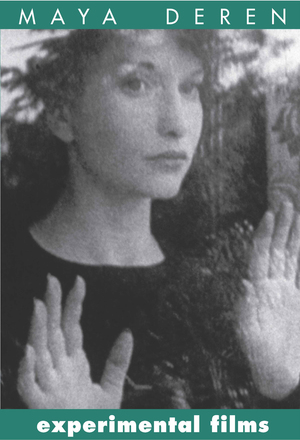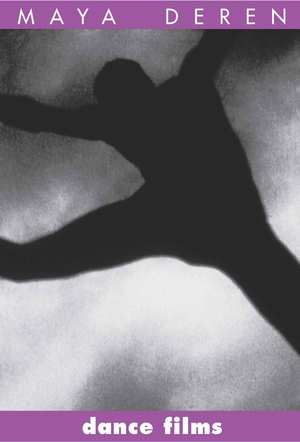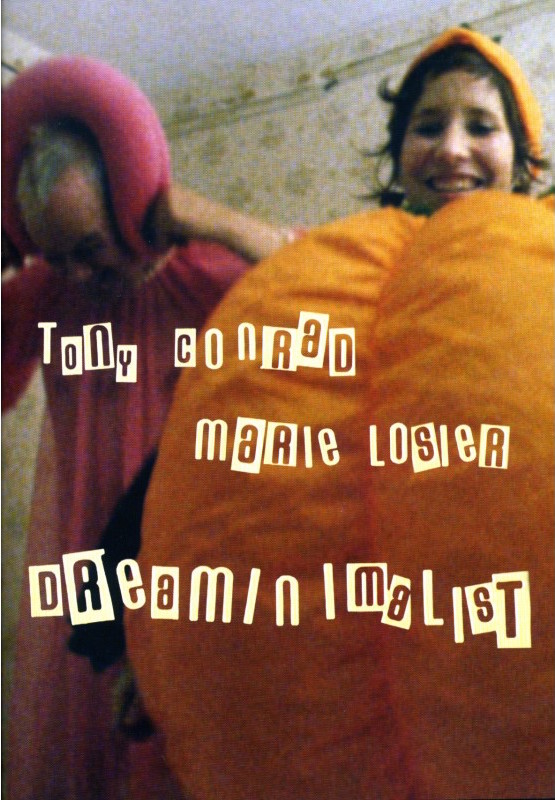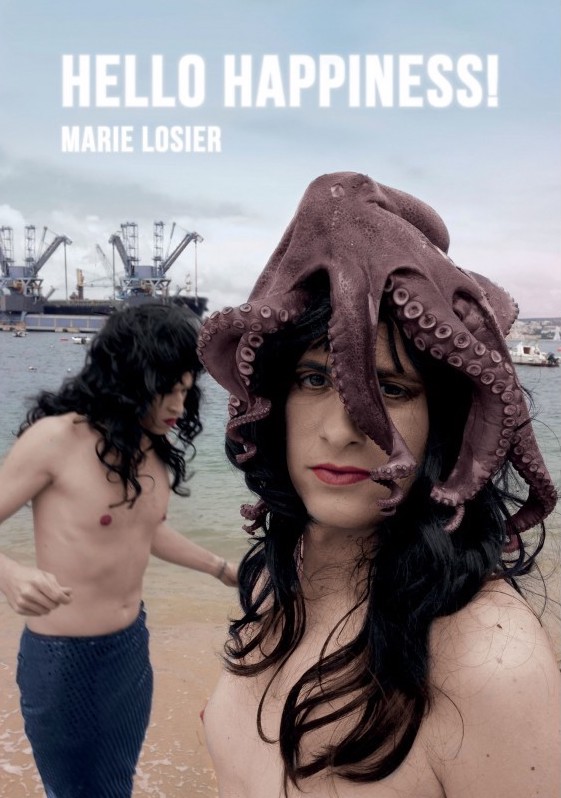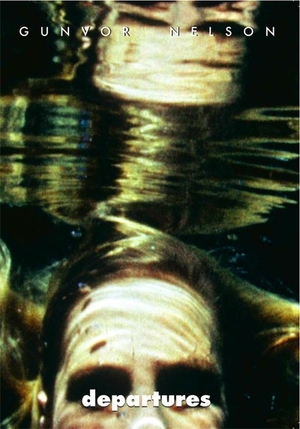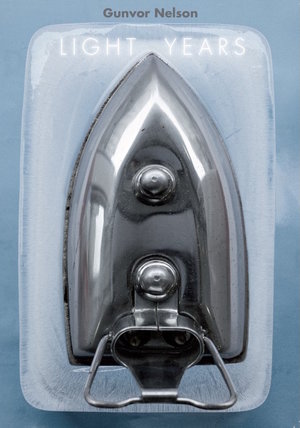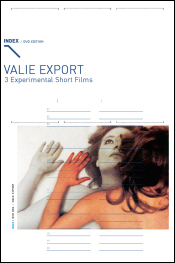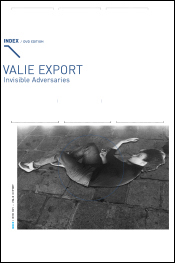Women’s History Month: GME Features Moving Image Works by Women Filmmakers
/As March draws to a close, GME feels it is important to pay tribute to Women Filmmakers from our catalogue of digital moving image publications which we make available exclusively to academic institutions in North America. The role of women filmmakers has been generally overlooked in the writing of film histories. In order to rectify these omissions in the field of academic film studies, GME is proud to distribute significant moving image works created by female artists in DVD format. An alphabetical list by filmmaker is featured here. Many of these digital publications have only recently become available, a situation that now affords the scholarly community a unique opportunity to revisit and revise film histories so as to incorporate these works in more robust fashion into the academic canon. The films and videos by women filmmakers represented in GME’s distribution catalogue encompasses films from 1902 (LES CHIENS SAVANTS, by Alice Guy) though to 2018 (WINTER IN PARIS), by Friedl vom Gröller. Many of these DVD publications are accompanied by scholarly essays [THE SEASHELL AND THE CLERGYMAN, IS THIS WHAT YOU WERE BORN FOR?, THE PRIMAL SCENE] which attest to the significance of these artists in shaping various film movements and in challenging and subverting a male-dominated cultural ideology with the centrality of strong female voices.
◊
Women began making films at the dawn of the 20th century, yet their contributions to the silent era have been generally overlooked in the writing of film histories. The Women Film Pioneer Project attempts to rectify this oversight, as does our release for academic use and study of the 6-disc DVD/Blu-ray Combo pack boxed set entitled EARLY WOMEN FILMMAKERS: AN INTERNATIONAL ANTHOLOGY (published by Flicker Alley). International in scope, this groundbreaking collection features over 10 hours of material, comprised of 25 films spanning the years 1902-1943.
Included in this DVD edition are many rare titles not widely available until now, ranging from shorts to feature films, live-action to animation, and commercial narratives to experimental works. Directors include Alice Guy Blaché, Lois Weber, Mabel Normand, Madeline Brandeis, Olga Preobrazhenskaia, Marie-Louise Iribe, Lotte Reiniger, Claire Parker, Mrs. Wallace Reid (Dorothy Davenport), Leni Riefenstahl, Mary Ellen Bute, and Dorothy Arzner. These women were technically and stylistically innovative, pushing the boundaries of narrative, aesthetics, and genre.
◊
GME’s distribution catalogue also features a wide array of other DVD publications by women filmmakers -- many in the avant-garde vein -- a domain in which their cinematic voices have predominated. They have expressed their creative visions though a diverse range of cinematic techniques, including animation (MARIA LASSNIG – ANIMATION FILMS) found footage (Abigail Child’s IS THIS WHAT YOU WERE BORN FOR?), and optical printing (Holly Fisher’s BULLETS FOR BREAKFAST). They have made significant contributions to the development of various film movements, including the trance film (MAYA DEREN: EXPERIMENTAL FILMS), Viennese Actionism (VALIE EXPORT: 3 EXPERIMENTAL SHORT FILMS), the Zanzibar Group (DEUX FOIS), surrealism (THE SEASHELL AND HE CLERGYMAN), creative biopics (NOTES ON MARIE MENKEN), dance films (MAYA DEREN: DANCE FILMS), performance (HELLO HAPPINESS!), collage (PLUNGE), portraiture (SILENCE ON THE SCREEN) and the body (INVISIBLE ADVERSARIES).
In addition to Germaine Dulac’s LA CIGARETTE (1919) and LA SOURIANTE MME. BEUDET (1922) featured on the EARLY WOMEN FILMMAKERS box set, we also distribute THE SEASHELL AND THE CLERGYMAN (1927), generally considered to be the first surrealist film. This bilingual (French-English) box set with a DVD and a book with extended scholarly essays is an indispensable resource that offers the possibility to rediscover Germaine Dulac’s famous film in its restored version and facilitates comprehension of this avant-garde masterpiece thanks to the perspectives opened up by the various artistic and theoretic contributions of the contributors.
◊
Maya Deren was one of the most pre-eminent avant-garde filmmakers of the 20th century; her first film MESHES OF THE AFTERNOON (1943), is the most renowned experimental film throughout all of film history (see MAYA DEREN: EXPERIMENTAL FILMS). She became known as a major proponent of the “trance” film, and her movies are a transitional link between the European avant-garde films of the 1920’s (see, for example, THE SEASHELL AND THE CLERGYMAN and the American avant-garde films of Kenneth Anger, Gregory Markopoulos, Stan Brakhage (see ANTICIPATION OF THE NIGHT) and others. Deren was also a poet and developed an interested in modern dance (see MAYA DEREN: DANCE FILMS). In her films, she also collaborated with other artists, who appeared in her films, including poet Anaïs Nin, musician John Cage, dancer Frank Westbrook, and her filmmaker-husband, Alexander Hammid.
◊
Contemporaneous to Maya Deren, Marie Menken was the other major female experimental filmmaker who made her imprint on experimental filmmaking history. NOTES ON MARIE MENKEN, a creative documentary by Austrian filmmaker Martina Kudláček traces the reminiscences of Menken’s friends and colleagues, among them Gerard Malanga (poet, photographer, and filmmaker) and Jonas Mekas (see JONAS MEKAS: THE MAJOR WORKS), fellow Lithuanian, artist, and public champion of the avant-garde). Various interviewees recount how the public, marital theatrics of Menken and her husband, filmmaker Willard Maas (VISIONS OF WARHOL), became the inspiration for the perennial battling older couple in Edward Albee's Who’s Afraid of Virginia Woolf? Beginning with the excavation of Marie's rusty film cans, old photographs, and papers housed in a storage locker, Kudláček brings Menken vividly back to life. She contrasts her own crisp black-and-white digital cinematography with lush color excerpts from Menken's 16 mm celluloid films. The bonus feature on this DVD edition comprises four of the poetic, experimental films that Menken created between 1945 and 1966, and which are referenced in Kudláček’s documentary: VISUAL VARIATIONS ON NOGUCHI (1945), GLIMPSE OF THE GARDEN (1957), ARABESQUE FOR KENNETH ANGER (1958-61), and LIGHTS (1964-1966). In addition, Menken’s ode to Warhol (ANDY WARHOL) is represented on GME’s release of VISIONS OF WARHOL.
◊
Martina Kudláček (NOTES ON MARIE MENKEN) is a significant woman filmmaker who over the course of her career has developed a unique cinematic legacy by creating discursive portraits of a numbr of experimental cinema’s key figures, including (in addition to Marie Menken), Maya Deren, Alexander Hammid, and Peter Kubleka (FRAGMENTS OF KUBELKA). According to film scholar Tom Gunning, "Kubelka's films play and work with the flow of time, compressing the continuous now and presence. His films digest the manifold things of the universe: the elemental energies of light and dark; movement and stillness; the life of animals and patterns of landscape; gesture and dance. With another mode of time Kudláček shared with us Kubelka's patient pace of conversation and listening, exploring things that mean so much to the artist: memories, souvenirs, his past and childhood, his home. All these things entered into Kubelka's films, but here they are brought to light and made part of his legacy as teacher and as artist… FRAGMENTS OF KUBELKA allows us to savor, swallow and digest these lessons."
◊
Another, younger woman filmmaker, Marie Losier, has also created cinematic portraits of an array of avant-garde artists. Losier learned from the Kuchar brothers (SINS OF THE FLESHAPOIDS) about the art of making 16mm films with a Bolex camera. Fellow filmmaker Jackie Raynal (DEUX FOIS) has written that Losier is “The girl Friday with a 16mm camera, high priestess of celluloid, defending it in the face of digital impermanence.” Through her craft, she has created a unique series of engaging cinematic “dream” portraits featuring key figures in avant-garde circles. The DVD edition of HELLO HAPPINESS! features Mike Kuchar (BIRD, BATH AND BEYOND, 2003), George Kuchar (ELECTROCUTE YOUR STARS, 2004), Richard Foreman (THE ONTOLOGICAL COWBOY, 2005), Guy Maddin (MANUELLE LABOUR, 2007), Genesis P-Orridge (SLAP THE GONDOLA, 2010), Alan Vega (JUST A MILLION DREAMS, 2014). The DVD publication DREAMINIMALIST features Tony Conrad’s seminal minimalist film THE FLICKER, together with Losier’s portrait of the artist, TONY CONRAD: DREAMINIMALIST. She often choreographs these on-screen performances with outré, costumed characters. Her movies are imbued with both psychological acumen and effervescent flair, which extends as well to her intimate, feature-length portrait biography film, THE BALLAD OF GENESIS AND LADY JAYE (2011) and CASSANDRO, THE EXOTICO! (2018).
◊
The Swedish-American artist Gunvor Nelson figures among the most important experimental filmmakers of her generation. She was born in Sweden, but left her native country in the mid-1950s to study painting and art history in the United States. Later, she and her husband, filmmaker Bob Nelson settled in the San Francisco Bay Area and raised their daughter, Oona. Gunvor Nelson's first film work was with her husband, then with her neighbor Dorothy Wiley, and finally on her own. Nelson chose not to label herself, identifying as neither "feminist" nor "hippie"; she made what she called "personal" films, (a term she preferred to "experimental" or "avant-garde".) Having studied painting and art history, Nelson chose cinema to express herself, through ambiguous and poetic sound and image art that explores dreams, the use/misuse of the female body, the difficulties of communication between generations, and dislocation from one's environment of origin. Her formal investigations include animation, collage, and found footage. Four early works (1962-1973) brought together in DEPARTURES show the genesis and maturation of an artist, the crystallization of her priorities creatively, and a continuous renewal of inspiration. A second DVD edition, LIGHT YEARS, reflects a half-century of evolution in media and technique, from her first experimental films made in California to her more recent Swedish films and video. Several of the films on both of these DVD editions were co-directed with Nelson’s neighbor, Dorothy Wiley. This DVD also includes a 124-page booklet comprising critical essays and an interview with the filmmaker.
◊
The 1960s, and 1970s, saw an explosion of women experimental filmmakers, including Jackie Raynal and Rose Lowder (France), Valie Export and Marie Lassnig (Austria), Christine Noll Brinckmann (Germany), and Abigail Child and Holly Fisher (US), all of whose creative output continued into the 21st century.
◊
Jackie Raynal is perhaps best known as the former programmer of two of New York’s premiere art cinemas – the Carnegie Hall and the Bleecker Street – who began her career in the 1960s as the film editor for New Wave directors such as Eric Rohmer, Jean-Daniel Pollet and Jean Eustache. Challenged by Zanzibar patroness Sylvina Boissonnas to stop editing other people’s films and make her own, Raynal traveled to Barcelona, where she completed DEUX FOIS (1969) in a single week. One of the most enigmatic of the Zanzibar films, this experimental narrative is composed of a series of unconnected episodes, some repeated twice. The fairy-tale phrase “once upon a time” is turned on its head, as is the logic of classical film construction. With herself as the film’s “star”, Raynal announces each of the film’s sequences and proclaims, theatrically and ironically, “tonight will be the end of meaning.”
◊
BOUQUET D’IMAGES brings together a series of 5 cinematic studies that filmmaker Rose Lowder meticulously created between 1978 and 1995. For many years, she has been developing an exceptional technique of weaving together images gathered frame- by-frame to form meticulous patterns of light. By oscillating the focal plane of photographs shot in the same place over time, her layered tapestries produce a new relationship between filmed reality and filmic image. From the movement of a waterwheel’s rotations, mirroring the camera mechanism, to a bouquet of flowers becoming a bouquet of images, her work demonstrates a unique means of expression. According to Light Cone co-founder Yann Beauvais, “Rose Lowder favors scenes of nature, even though some of the sites filmed are located in the city. Through their filmic transformation, they no longer appear to be urban manifestations but natural landscapes. In this way, Rose Lowder continues an impressionist tradition: working in nature rather than in the studio; like Cézanne, working on site is the sine qua non condition in order to reveal the ‘little sensation’ and represent it.”
◊
Austrian artist VALIE EXPORT has been an influential and provocative figure on the international art scene for over three decades. Her practice includes film, video, photography, text and performance. Initially expanding the Actionist project to confront a complex feminist critique of the social and political body, her works achieve a compelling fusion of the visceral and the conceptual. This DVD publication THREE EXPERIMENTAL SHORT FILMS brings together works she created between 1970 and 1984.
INVISIBLE ADVERSARIES (1976) is Valie Export’s first attempt at a feature-length narrative. Author Gene Youngblood has written that this film “is a tour de force of cinematic invention…and it reveals a prodigious talent at work. The title refers to extraterrestrial aliens called ´Hyksos´, malevolent forces that enter human bodies like incubi and initiate the decline of civilization. Not to be taken literally, the Hyksos are a poetic metaphor for the modern Zeitgeist, the apocalyptic mood of the times. Ms. Export uses this theme as a framework for some of the most audacious and amazing experiments since Cocteau. The comparison is appropriate, for on one level INVISIBLE ADVERSARIES is about art and the artist, a modern BLOOD OF THE POET. To this, Export brings a fresh and intelligent sensibility, characteristically self-referential. Her visual resources include mirrors, still photography, video, dance, and films within the film, all employed with a bold and surprising inventiveness."
◊
Maria Lassnig trained at the Academy of Fine Arts, Vienna, and then spent several years in Paris in the 1950s and 60s, where she was exposed to Art Informel and Surrealism. From 1968 to 1980, she lived in New York, where she did pioneering work in film, producing a series of remarkably inventive animations, many of which are collected in the DVD publication entitled MARIA LASSNIG – ANIMATION FILMS. She then returned to Vienna, where she continued to work and teach. Drawing on some of the same themes and subjects as her paintings, her filmic narratives are profound and astute observations of the complexities of male-female relationships and of the experience of being both a woman and an artist. Her most celebrated film—MARIA LASSNIG KANTATE—was produced later, in 1992, when Lassnig was 73, and is also represented in this DVD edition. It presents her life story in a 14-verse song performed by the artist in a variety of costumes and accompanied by animations that are filled with humor and wit.
In addition to these significant works by Valie Export and Maria Lassnig, we also distribute monographic DVD editions of films and videos created by other Austrian and Eastern European filmmakers: Constanze Ruhm, Dóra Maurer, Gertrude Moser-Wagner, Linda Christanell, Lisl Ponger, Mara Mattuschka, and Ursula Pürrer all of whom are represented here.
◊
Christine Noll Brinckmann is a filmmaker, spectator, scholar, and author. Heinz Emigholz (HEINZ EMIGHOLZ: THE FORMATIVE YEARS), who in 1993 inaugurated the "Experimental Film Design" class at the Berlin University of the Arts, inspired Christine Noll Brinckmann to write an important text which was published in 1993, and was entitled "Experimental Film 1920-1990: Collective Movements and Solitary Thrusts." This remains the only attempt to give an overview of the history of experimental film in Germany. According to Katharine Synema, “Hidden and discarded people and places are the sediments on which Noll Brinckmann’s films rest. Peripheral places and castaway objects unfold histories and assume uncanny connections…Color and texture are leitmotifs in Noll Brinckmann’s cinema. They turn the gaze to the surfaces of things and thy give a dynamic quality to the surface of the cinematic image.”
The lavishly illustrated soft-cover book publication THE PRIMAL SCENE presents a DVD with eight films by Christine Noll Brinckmann, reproductions of images from the films in full-color, essay contributions, and an interview with the filmmaker. Also included are two bonus titles (STILL LIFE, 1976) by Jenny Okun and CASTA DIVA [1st episode], 1982) by Eric de Kuyper together with Brinckmann’s appreciation of these films.
◊
IS THIS WHAT YOU WERE BORN FOR? features a DVD of the same-named 7-part epic series created by Abigail Child, together with extended analysis of this filmmaker’s work by noted scholars including Tom Gunning and Melissa Ragona, as well as an interview with the filmmaker herself. The filmic work of Abigail Child, borrowing strategies from found footage, Appropriation Art, Language Poetry and experimental music, stands as a landmark in the experimental cinema of the 1980's and beyond. The processing of interruption and fragmentation inform the series IS THIS WHAT YOU WERE BORN FOR? (1981-1989), reactivating the stakes of montage applied in the aforementioned artistic practices. Her films also deconstruct issues around the margins of representation, including female identity and economic class.
◊
During the pre-digital era of filmmaking, perhaps there has been no greater practitioner of the use of the optical printer than Holly Fisher, resulting in arresting celluloid images developed on the 16mm film emulsion. BULLETS FOR BREAKFAST is a DVD edition of a selection of her moving image works, featuring her most widely-known film, BULLETS FOR BREAKFAST (1992), together with 4 of her short films (GLASS SHADOWS [1976], FROM THE LADIES [1977], THIS IS MONTAGE [1978], and SOFTSHOE [1987]). In BULLETS FOR BREAKFAST she worked for four years in meticulous fashion to construct a collage of layered images (and text) and sounds, as well as fragmented storylines. She weaves together images and audio from John Ford’s MY DARLING CLEMENTINE (1946), a western pulp writer, women working in a Maine fishery smokehouse, postcards of paintings of the female form by the great masters, and a feminist poet. Fisher thus creates a more open ended and formalist narrative that upends the story of the mythological western hero toward a feminist critique of women at work and in life.
SOFTSHOE is another optical printing masterwork, in which Fisher creates a collage of frames in motion. The filmmaker originally shot footage in Europe of people, buildings, and nature. In the optical printing process, she then fractured these narrative sequences by employing a staccato montage rhythm, which she constructed through freeze-frames, slow motion, the intrusion of the frame line, optical zooms, black frames, and revelation of the film strip. Some of the most visually arresting sequences involve the reproduction of specific imagery – blades of grass, a church, a horse and cart -- into smaller quadrants of successive motion. In this manner, Fisher also pays homage to Eadweard Muybridge, whose nineteenth century motion experiments are embedded in her film.
GLASS SHADOWS (filmed in Fisher’s studio in Cambridge) and FROM THE LADIES (filmed at a Holiday Inn in NYC) are self-reflexive works, in which the artist’s presence is revealed though the reflected surfaces of windows and mirrors. Both films deconstruct the filmmaking process, incorporating images of the camera, 16mm film strips, and the motion picture projector. These two works demonstrate Fisher’s proficiency with capturing both light and shadow, which are two of the essential characteristics of the cinematic enterprise, as well as externalizing Fisher’s creative process.
Finally, THIS IS MONTAGE represents Fisher’s homage to Sergei Eisenstein and underscores the filmmaker’s formative training beginning in the 1960s as an editor. (She later edited the Oscar nominated documentary feature WHO KILLED VINCENT CHIN? (1987). Throughout her career, Fisher has successively bridged the dividing line between documentary film and experimental narrative.
◊
PLUNGE, is a double-DVD edition spanning Vivian Ostrovsky’s experimental filmmaking career. A citizen of the world, Ostrovsky has made films in Brazil, France, Israel, Japan, the Soviet Union and the United States.
Conversant in the experimental filmmaking practices of such artists as Jonas Mekas (DIARIES, NOTES, AND SKETCHES) and Jim McBride (DAVID HOLZMAN’S DIARY, 1967), Ostrovsky was inspired to create her own film diaries. She developed a filmmaking technique that initially involved shooting with a silent Super 8 camera; she loved the “gritty…indefinition” of the images that were exposed on the film’s emulsion. She continued with an intuitive editing process, adding in sound originating from vinyl records. (Later, she filmed in MiniDV so as to simultaneously be able to record image and sound together).
As her filmmaking adventures progressed -- combined with her extensive knowledge of other avant-garde filmmakers’ works (including Bruce Conner and Jack Smith, as well as Jacques Tati and Jean-Luc Godard) -- she incorporated the cinematic forms of the film diary, found footage, collage, essay film, personal memoir, and political tract to create her own distinct filmic language. As Federico Rossin has written so succinctly in the booklet accompanying this DVD edition: "This indeterminacy, or mixing of genres, provokes a reconsideration of the language of control, of all aspects of “Cinematic machismo”; it indicates the militant and feminist roots of Ostrovsky’s practice; her ethical and political commitment. Combining great humility with breathtakingly precise audiovisual montage, Ostrovsky creates a field of artistic expression that escapes and expands beyond its boundaries…her hybrid cinema refuses to be limited by format or convention; with each new film, she liberates powerful new forms and expands her burgeoning creative process."
◊
The joint DVD and book publication entitled SILENCE ON THE SCREEN/Once is Not Enough (Photography and Film), features the work of Friedl Kubelka vom Gröller. She is an Austrian photographer, filmmaker and visual artist born in London, England in 1946. Her photographic practice has been attributed to a 20th-century movement known as Viennese Actionism. This is one of the latest publications in the series of editions published by INDEX DVD, a joint venture of the Vienna-based Sixpack Film and Meidenwerkstatt established for the publication of Austrian films and art videos. This specific release complements similar editions of Viennese Actionist filmmakers such as Kurt Kren (KURT KREN: ACTION FILMS) and Valie Export (VALIE EXPORT: 3 EXPERIMENTAL SHORT FILMS). Rejecting the commodification of art, these artists enacted precisely scored “Actions” -- staged events in environmental spaces – which paralleled activities of the Fluxus artists (see FLUXFILM ANTHOLOGY). Many of the films that these artists created focused on the body. For women artists, these moving image works also were known as “Feminist Actionism" (see also Valie Export’s INVISIBLE ADVERSARIES).
The DVD, SILENCE ON THE SCREEN, is a selection of 19 short films by Friedl vom Gröller. These works were filmed in Austria, Senegal, Italy, and France. They focus primarily on portraiture, including faces, female breasts, and hands. Most all of these films are 1 ½ to 3 minutes in length.
The accompanying soft-cover book entitled ONCE IS NOT ENOUGH (in which the DVD is included) is replete with photographs that parallel the artist’s moving image works in portraiture. This hard-copy publication contains pictures of artists and filmmaker friends. They include Bruce Baillie, Hollis Frampton, Nam June Paik, Shigeko Kubota, and George Maciunas; Kenneth Anger, Bruce McClure, and George Landow; vom Gröller's former husband Peter Kubelka (FRAGMENTS OF KUBELKA), George and Mike Kuchar (SINS OF THE FLESHAPOIDS), Stan and Jane Brakhage (ANTICIPATION OF THE NIGHT), Jackie Raynal (DEUX FOIS), Jonas Mekas and Hollis Melton (JONAS MEKAS: THE MAJOR WORKS), and Ken and Flo Jacobs (CYCLOPEAN 3D: LIFE WITH A BEAUTIFUL WOMAN).
This publication also features several of vom Gröller’s annual series of self-portraits . This book also includes two important essays: “Aging – An Ideal Condition/Photography and film in relationship to each other” by critic Dietmar Schwârzler), as well as “The Metal Bowl,” authored by filmmaker Miranda July.
◊
Women have also made significant contributions to documentary filmmaking. GME already distribute DVD editions of works by Martina Kudláček (see above, NOTES ON MARIE MENKENand FRAGMENTS OF KUBELKA). We are proud now to present work by Margot Dias, an important yet overlooked filmmaker through the DVD publication, MARGOT DIAS: ETHNOGRAPHIC FILMS 1958-1961. Between these years, the anthropologist Margot Dias (1908-2001) shot 28 films in Mozambique and Angola, which belong to the Film Archive of the National Museum of Ethnology (Museu Nacional de Etnologia in Portugal. These films were made within the "study Missions on the Ethnic Minorities of the Portuguese Overseas Territories" headed by Jorge Dias and represent one of the first uses of ethnographic film within Portuguese anthropological studies.
This edition includes all the films shot within those fieldwork campaigns and a soundtrack composed from Margot Dias's own field recordings. The identification and thematic organization of the films, as well as the soundtrack is the work of Catarina Alves Costa. Also included, as a bonus feature, is a previously unreleased interview with Margot Dias, held in 1996 by Joaquim Pais de Brito, former director of the National Museum of Ethnology.
◊
MASTERWORKS OF AMERICAN AVANT-GARDE EXPERIMENTAL FILM focuses on the emergence and development of the experimental film movement in the United States between 1920 and 1970. Women artists were instrumental in this arena, and included in this digital edition are works by Mary Ellen Bute, Maya Deren, Anaïs Nin, Marie Menken, and Amy Greenfield. In addition, FLUXFILM ANTHOLOGY includes works by Yoko Ono and Chieko Shiomi.
◊
CINE A CONTRACORRIENTE constitutes another broad survey of experimental filmmaking, in this case of Latin American cinema (including Cuba), with films made between 1933 and 2008. Elena Pardo from Mexico is represented in this DVD edition with her film JUQUILITA (2004).
FROM ECSTASY TO RAPTURE is an historical survey of Spanish Experimental Cinema, comprising films created between 1957 and 2005. These artists express passion for the medium, and demonstrate that experimental cinema has a long tradition in Spain, despite the adversities in production, distribution and exhibition during the Franco regime, and following that, in being considered as part of the artistic world. Women filmmakers are represented in this DVD edition by Eugènia Balcells (BOY MEETS GIRL, 1974) and Laida Lertxundi (FARCE SENSATIONELLE!, 2004).
APOLOGÍA ANTOLOGÍA brings together 40 years of audiovisual creation, comprising 85 works of video art by Spanish filmmakers, that date from 1974 to 2014. Organized by Hamaca (a media and video art distributor based in Barcelona), this 5 disc boxed set of DVDs is organized around different themes, including Conceptual Video, montage, political poetics, and the body. The women video artists included in this digital publication include Cecilia Barriga, María Cañas, Dora García, Marisa Maza, María Ruido, and Virginia Villaplana among others.
FROM DOODLES TO PIXELS is an extraordinary compilation of approximately 50 short animated films (and one feature), produced in Spain, spanning the entire history of cinema (in this case, 1909 – 2015). These three DVDs not only reflect the diversity of techniques that make animation an art that knows no boundaries, but also offer a journey through the aesthetic evolution of a country that has lived through times of scarcity and isolation before emerging as a significant producer of animated films within the contemporary international arena. This boxed set also includes a 160 page booklet with information on each film. Women animators Rocío Álvarez , Isabel Herguera, Izibene Oñederra, and Anna Solanas are all included in this digital publication.
◊
SHOOT SHOOT SHOOT is a compilation of British avant-garde films from the 1960s and 1970s, in which independent filmmakers challenged cinematic convention. Based at the innovative laboratory of the London Film-Makers’ Cooperative, these artists were able to control every aspect of the creative process, including the printing and processing, which became vital to the form and content of the resultant films. Lis Rhodes, Annabel Nicolson, and Marilyn Halford are key artists who created moving image works within this discourse.
In similar fashion, STUDIO EEN: EXPERIMENTAL FILMS FROM THE LOWLANDS traces the work of filmmakers at the end of the 1980s who were dedicated to working against the tide of the rise of video production and the decline of the Super 8 film format (as well as 16mm). Filmmaker Karel Doing and two of his friends from the art school in Arnheim, the Netherlands created a new space for filming and processing small gauge film. Among the women filmmakers involved with Studio Een were Barbara Meter, Ania Rachmat, and Anet van de Eizen.
The thematic DVD compilation, AS SHE LIKES IT – FEMALE PERFORMANCE ART FROM AUSTRIA, focuses uniquely on women artists from Austria. Through moving image and sound works dating from 1992 to 2004, they utilize the expressive power of voice and body to more confidently assert the female gaze, in contrast to the Viennese Actionism movement and Happenings in the 1960s and 1970s that provided a foundation for these later iterations of performance art.





